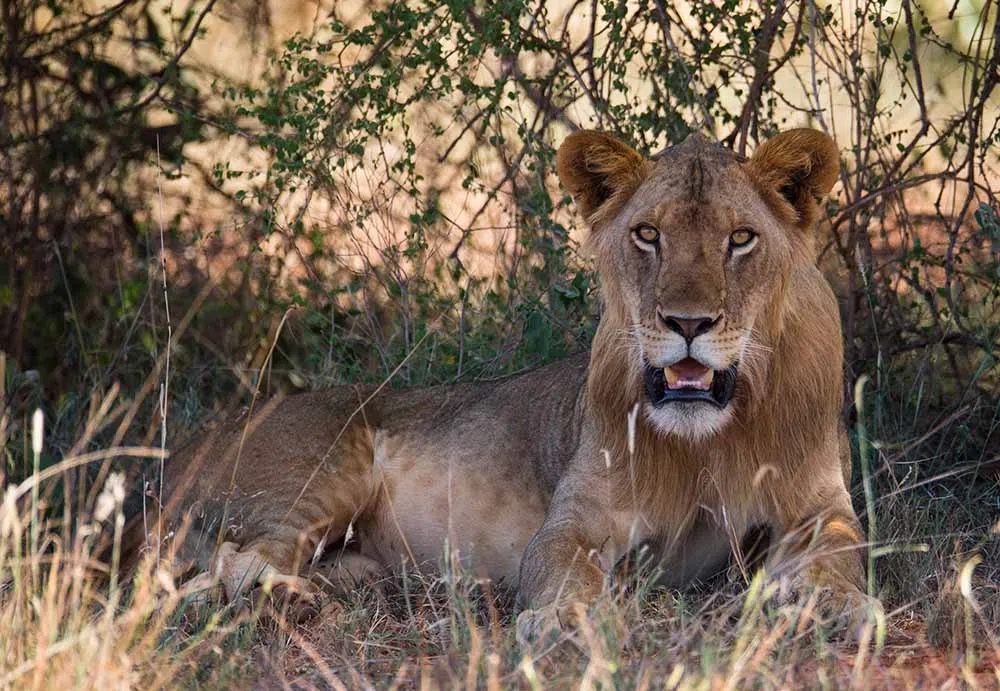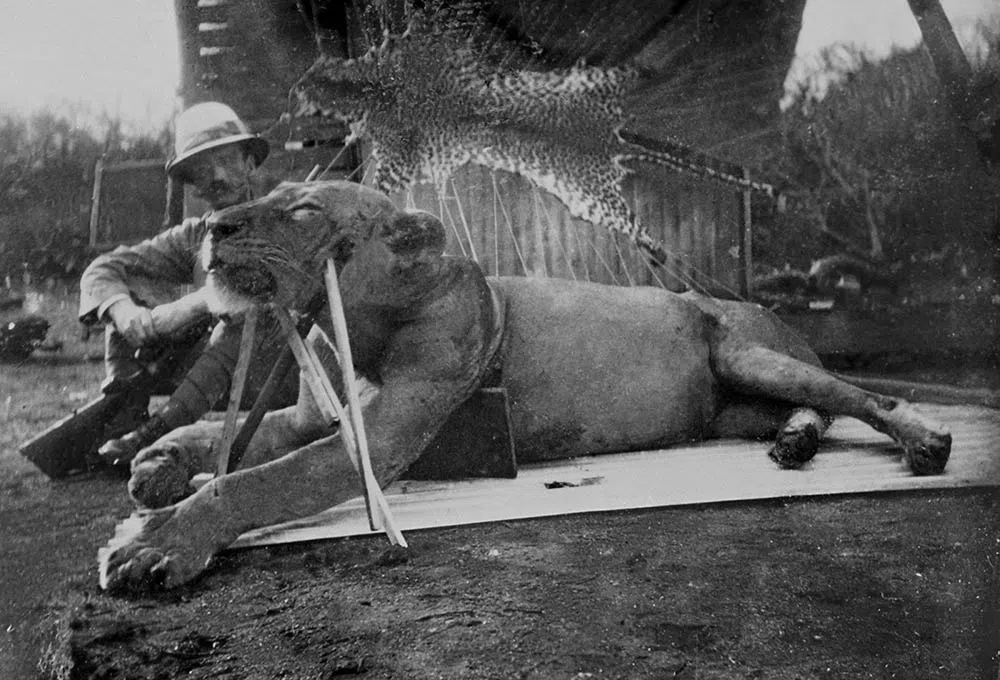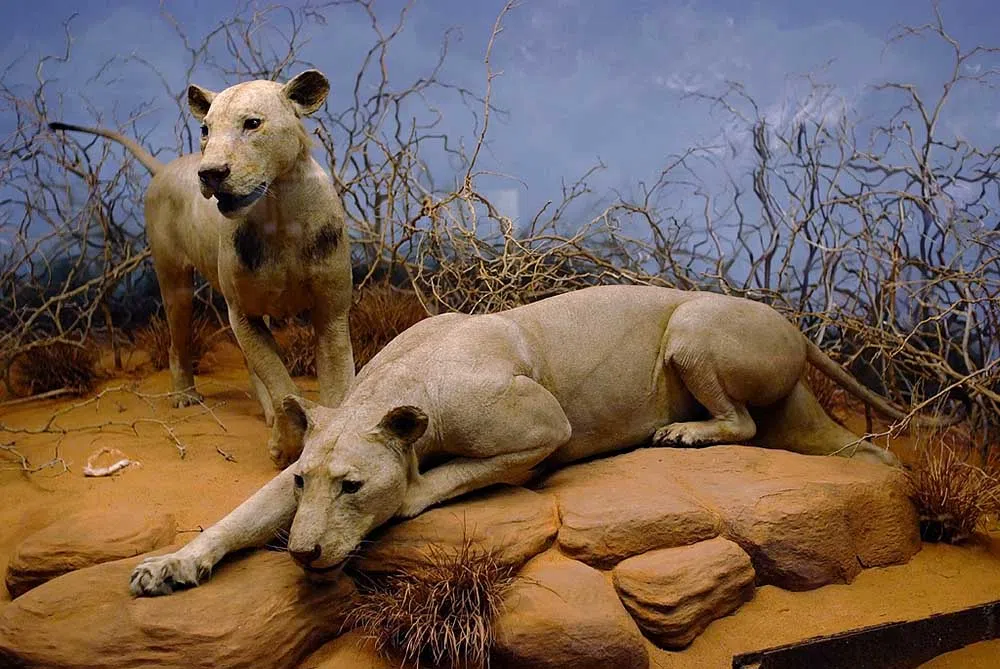The Savage Tsavo Man-Eaters and the Man Who Stopped Them
Featured in Ripley's Believe It or Not!

The Tsavo Man-Eaters
Just east of the famous Kilimanjaro peak, in the unforgiving Tsavo desert, a pair of lions ate a reported 135 people!
Featured in Ripley's Believe It or Not!

Just east of the famous Kilimanjaro peak, in the unforgiving Tsavo desert, a pair of lions ate a reported 135 people!
Tsavo lions have long been notoriously known as man-eaters. Smaller than their Serengeti brethren west of the mountain, Tsavo lions have smaller manes or no manes at all thanks to their harsher environment. While most lion prides will have a large number of females with a pair of males among them, Tsavo lion groups are smaller, with only one male claiming breeding rights.


Tsavo region lion.
As the salve trading roads developed through Tsavo, many traders pushed their captives hard across the barren wasteland. When a slave died, they were simply left behind, becoming an ample meal for scavenging predators. Many believed this gave the Tsavo lions an early taste for human flesh, one that would be whet for the incoming British in the late 19th-century.
Soon after Lieutenant Colonel John Henry Patterson arrived to lead the construction of a railroad bridge in 1898, lion attacks ravaged his worker’s camp. Striking in the night, a pair of lions with a seemingly insatiable appetite stalked the builders. Screams could be heard in the dead of night as these ferocious predators pulled men from their tents into the wilderness.
Some accounts state that 135 people were eaten by the two lions that year, but company reports place the official figure closer to around 40. This figure, however, didn’t account for any nearby villagers that may have been killed by the lions, making the true number a mystery.
Lieutenant Patterson, who had hunted tigers in India, was put in charge of stopping the lion’s massacre. He erected thorn barriers, lit bonfires at night, and enacted curfews, but the attacks only seemed to get worse. The workers grew increasingly superstitious and mutinous. It took Patterson months to kill the lions, and upon their deaths, they discovered both were maneless males, rogues without a pride. At over nine feet long each, they were also abnormally larger than other lions in the era, most likely owed to their ample new source of food.

Patterson and one of the man-eaters.
Patterson was immediately proclaimed a hero, restoring faith in his workers and acclaim around the world. The lions were stuffed, eventually making their way to Chicago’s Field Museum of Natural History.

The stuffed Tsavo man-eaters./CC Jeffrey Jung
At the time, much romance and superstition were used to explain the Tsavo man-eaters’ behavior. An incorrigible appetite or taste for human blood was chief among Patterson’s own account of the animals’ reasoning. He surmised that the careless burial practices in the region had meant the lions often scavenged human remains, enticing them to dine on humans.
Since the lions’ remains were preserved, scientists have been able to examine their mouths and discovered that damaged jaws may have accounted for their behavior. With evidence of an abscessed tooth, they believe one of the lions may have had trouble hunting larger prey, and might have been forced to raid the camps for food.
Source: The Savage Tsavo Man-Eaters and the Man Who Stopped Them


